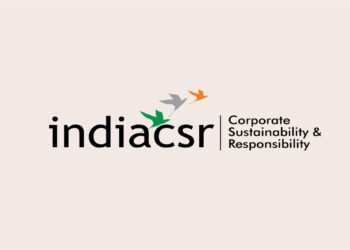 SHINGHAI: China’s Ministry of Environmental Protection on 20 December launched the HCFC Phase-out Management Plan (HPMP), a US$270 million project to cut consumption of Hydrochlorofluorocarbons (HCFCs) by 1 January 2015.
SHINGHAI: China’s Ministry of Environmental Protection on 20 December launched the HCFC Phase-out Management Plan (HPMP), a US$270 million project to cut consumption of Hydrochlorofluorocarbons (HCFCs) by 1 January 2015.
The HCFC-phaseout in China is impacting chemical production, foam, industrial and commercial refrigeration, air conditioners, refrigeration servicing and solvent sectors, whose total output amounts to billions of Renminbi and will involve tens of thousands of enterprises and millions of workers.
At the launch, China’s central governmental Ministries, industrial associations, local environmental protection bureaus, research institutes and universities as well as over 100 large companies, which produce and use HCFCs, guaranteed their support to the programme. In addition 12 selected companies representing the PU, XPS, room air conditioning, industrial and commercial refrigeration sectors signed the voluntary pledge to join hands for the conversion of their production lines as specified under the approved HPMP plan.
“China is the largest producer, consumer and exporter of HCFCs in the world: more than 70% of global HCFC production, and 50% of total consumption of developing countries. Therefore, the phaseout of HCFCs in China will play an essential role for the successful implementation of the Montreal Protocol. In addition, it will also positively affect the mitigation of the global climate change due to their high GWP. However, in the past three years, the HCFCs in China has been increasing at 11% annually”, said Mr. Lijun Zhang, Vice Minister of Environmental Protection of China.
Mr. Zhang added that “as a responsible developing country, China will earnestly live up to her promises and meet her commitments.” In his speech, Mr. Zhang requested that industry comply with the HPMP’s target, and urged the local Environmental Protection Bureau (EPBs) to strengthen their capacity for effectively enforcing the HCFC production and consumption control measures.
HCFCs are mainly used in China as refrigerants for air-conditioners and industrial and commercial refrigeration, as well as a blowing agent for foam and as solvent. Under the Montreal Protocol on Substances that Deplete the Ozone Layer, all Parties must gradually reduce and eventually phase-out their production and consumption of ozone-depleting substances (ODS), including HCFCs.
Labeled as the “Factory of the World”, China’s phase-out of HCFCs is an ambitious mission, impacting industries which will have to convert hundreds of assembly lines to meet China’s obligations as a signatory to the Montreal Protocol.
Based on Decision XIX/6 of the Meeting of the Parties in 2007, China must achieve a freeze in baseline consumption (2009-2010 average) by 2013 and a 10% reduction by 2015. The country’s State Council enforced the ODS Management Regulations on 1 June 2010 to provide legal basis for the ODS phase-out work.
“The China HPMP has been well developed and has set the roadmap to meet these targets. We are therefore optimistic that the government, industries, relevant international organizations, and other key stakeholders will work together to ensure the success of this programme,” said Mr. Christophe Bahuet, United Nations Development Programme (UNDP) Country Director of China, the lead implementing agency for China’s HPMP initiative.
Through the HPMP, 45,000 metric tons of HCFCs, or about 17% of China’s total amount of controlled HCFCs use, will be eliminated. In addition, as part of the project, the new technologies to replace the HCFC technologies currently used by the industries will significantly reduce Greenhouse Gas (GHG) emissions in the country.
The funding for the HPMP was approved by the Executive Committee of the Multilateral Fund for the implementation of the Montreal Protocol in July 2011 to assist China in their historic commitment on environmental protection. UNDP, the UN Environment Programme (UNEP), the UN Industrial Development Organization (UNIDO), the World Bank and the Governments of Germany and Japan are assisting China in their HPMP, and all participated in the launching event to lend their support. The Chairman of the Executive Committee and the Chief Officer of the Multilateral Fund Secretariat, representatives of donor member from Australia, the Netherlands, Switzerland and the United States were also invited to the meeting.
“We at UNEP are very enthusiastic in assisting the government of China in their capacity-building and public awareness campaign on the phase-out of HCFCs. We very much appreciate the strong political commitment made by the Government of China in the implementation of the Montreal Protocol, and we are also very pleased to witness the pledge made by the industry” said Mr. Zhang Shigang, UNEP Coordinator in China in his address to participants at the launch.
Several Chinese celebrities have also expressed their support in the advocacy of ozone layer protection, including UNEP Goodwill Ambassador and Chinese actress Li Bingbing and world-renowned artist and UNEP Patron for Arts and Environment Profressor Yuan Xikun, who are both involved in voluntary projects for this cause.
India CSR offers strategic corporate outreach opportunities to amplify your brand’s CSR, Sustainability, and ESG success stories.
📩 Contact us at: biz@indiacsr.in
Let’s collaborate to amplify your brand’s impact in the CSR and ESG ecosystem.





















